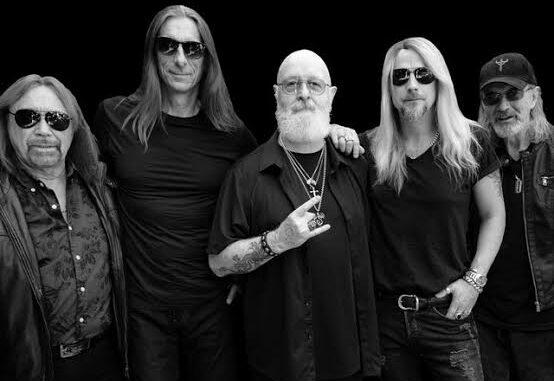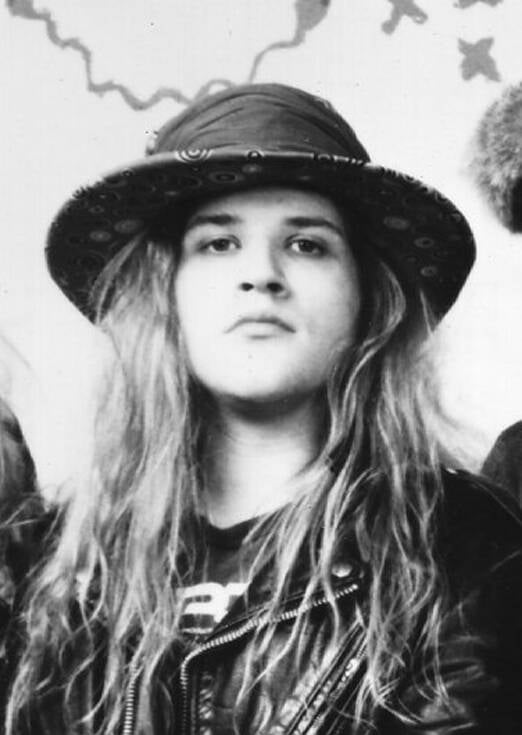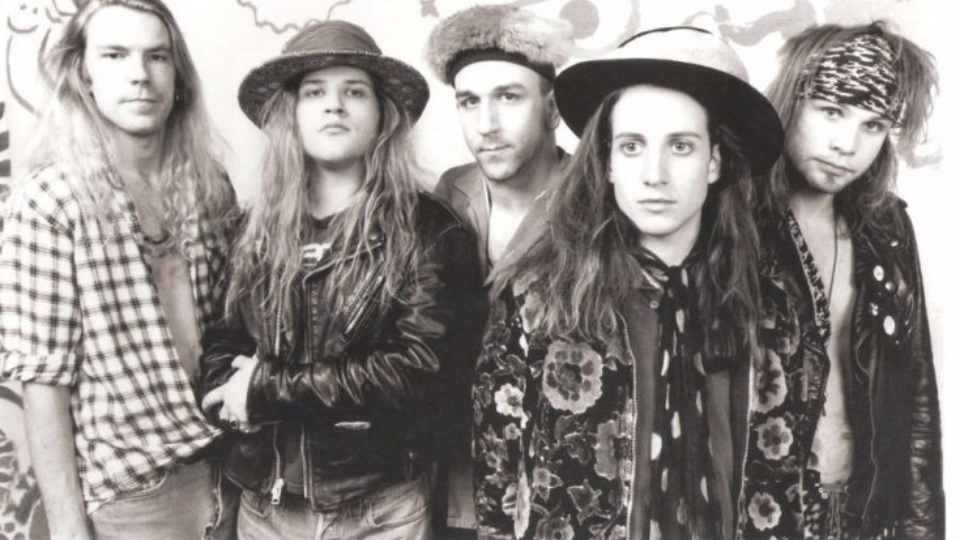




The Tragic Death of Andrew Wood: How One Overdose Shattered a Scene—and Sparked a Music Revolutio— Andrew Patrick Wood, charismatic frontman of Mother Love Bone and glam-rock pioneer in Seattle’s pre-grunge scene, tragically died at age 24 after a heroin overdose. His untimely passing, just days before the release of his band’s debut album Apple, sent shockwaves through the close-knit community that would ultimately shape the future of grunge music.¹
A Rising Star in Seattle’s Underground
Born January 8, 1966 in Columbus, Mississippi, Wood moved with his family to Bainbridge Island, Washington, where he would emerge as one of Seattle’s most electrifying performers. He formed his first band, Malfunkshun, in 1980 alongside his brother Kevin Wood and drummer Regan Hagar, adopting flamboyant stage personas—Wood performing as “Landrew the Love Child.”²
A devoted disciple of David Bowie, Freddie Mercury, and Elton John, Wood fused glam rock with raw post-punk introspection. Though Malfunkshun never signed to a major label, their two tracks on the influential Deep Six compilation solidified their role as grunge forerunners.² Wood’s dynamic presence—often featuring colorful costumes and theatrical flair—made him a memorable figure within Seattle’s underground scene.³
Birth of Mother Love Bone—Hope on the Horizon
In 1988, Wood joined forces with former Green River members Stone Gossard and Jeff Ament, eventually forming Mother Love Bone along with Bruce Fairweather and Greg Gilmore. After releasing the Shine EP in 1989 under Stardog/Mercury, the band recorded their full-length debut Apple, scheduled for a March 1990 release.⁴
In preparation, Wood made a concerted effort to overcome his heroin dependency—having previously entered rehab in 1985. His fiancée, Xana LaFuente, recalls his dedication to sobriety during that period, though the struggle lingered.⁵
The Fateful Night: Overdose and Death
On March 16, 1990, Wood’s fiancée discovered him in a coma after a heroin overdose at their Seattle home. “By the time the ambulance got there… Andy was clinically dead,” LaFuente later recounted.⁶ He was rushed to Harborview Hospital, placed on life support, but never regained consciousness. Physicians removed life support on March 19; Wood passed away at 3:15 pm. The official cause was hypoxic encephalopathy due to the overdose.⁷
Wood’s death certificate attributed his death to oxygen deprivation—a grim medical acknowledgment that his brain was starved of oxygen during the coma.⁷ Yet lingering speculation, including accounts in his biography and documentary, suggest an allergic reaction to emergency medications may have aggravated his condition, potentially proving fatal despite the initial overdose.⁸
A Community in Mourning
The Seattle music scene, still emerging from its underground roots, was devastated. Chris Cornell, Wood’s roommate and frontman of Soundgarden, described the emotional toll: “I felt really alone when Andy died… Most of the time it was me watching him struggle.”⁹ Cornell, Gossard, and Ament channeled their grief into the Temple of the Dog project, crafting songs like “Say Hello 2 Heaven”—poignant tributes to Wood’s memory.⁴
Pearl Jam co-founder Eddie Vedder contributed vocals to the sessions, which would solidify the nascent band’s chemistry.⁴ Their collaboration culminated in the 1991 Temple of the Dog album and effectively paved the way for Pearl Jam’s debut, Ten.¹¹
Alice in Chains followed suit, dedicating their 1990 debut Facelift to Wood and including “Would?” on their next album, Dirt—a direct homage to their fallen friend.¹²
The Fallout: From Tragedy to Transformation
Some view Wood’s death as the watershed moment for grunge’s ascension. As his brother Kevin observed, “Maybe it was the end of the innocence… It became a sea of crocodiles.”¹⁰ Indeed, the tragedy accelerated the scene’s transition from obscure subculture to global phenomenon with darker textures and deeper introspection.¹³
Music journalists later called Apple a “great hard-rock record of the ’90s,” noting Wood’s voice “could have been the first of the big‑league Seattle rock stars.”⁷ Following a somber tribute at Apple’s posthumous release in July 1990, the album stood as both eulogy and legacy.⁴
Remembering Andrew Wood
Decades later, Wood’s impact remains palpable. In 2005, the documentary Malfunkshun: The Andrew Wood Story featured interviews with friends and bandmates—Cornell, Gossard, Ament—highlighting how the tragedy shaped Seattle’s music landscape.¹⁴
Fans and fellow musicians continue to honor him. Pearl Jam, for instance, raised funds to buy Wood’s mother Toni a house, reaffirming the enduring bond within that musical family.¹⁵ Additionally, bands like Candlebox and Faster Pussycat released tribute tracks in his name.¹²
Reimagining What Might Have Been
Had Wood lived, Seattle’s music narrative could have been vastly different. Some speculate that Mother Love Bone may have risen to mainstream success with wood at the helm; in lieu of that, bands like Pearl Jam and Soundgarden adapted, advancing their legacies within the pain of their loss.¹⁷
Eddie Vedder echoed this sentiment, stating in a 2003 Pearl Jam concert that Wood “would have loved it here,” referencing a performance at Madison Square Garden where the band covered his song “Crown of Thorns.”¹⁷
Conclusion: Legacy Forged in Loss
What began as a harrowing personal loss became landmine of creativity, forging new bands, songs, and identities. Andrew Wood’s life and death didn’t just mark an end—they inspired a movement. His dramatic flair and songwriting flair triggered a renaissance in rock that rippled far beyond Seattle.
As the architects of grunge achieved global recognition, many always carried Wood in their hearts—echoed through lyrics, commemorative albums, and public tributes. Reflecting on his life, Kevin Wood said it best: “Andy died a tragedy… he missed out on being able to show everybody his genius”—yet, through his legacy, many came to recognize it.²⁰
Remembering Through Music
| Tribute | Year | Notes |
|---|---|---|
| Temple of the Dog – Temple of the Dog | 1991 | Duet “Hunger Strike” with Vedder and Cornell¹⁴ |
| Alice in Chains – Facelift & Dirt | 1990–92 | Dedicated album and “Would?” directly references Wood¹² |
| Mother Love Bone – Apple | 1990 | Released posthumously with tribute liner notes⁴ |
| Documentary – Malfunkshun: The Andrew Wood Story | 2005 | Chronicling life, music, and influence¹⁴ |
Even now, fans gather to perform his songs; Seattle benefit shows continue; home videos featuring his larger-than-life presence resurface. The memory of Andrew Wood—graceful, troubled, exuberant—endures, immortalized not just in record grooves but in the DNA of alternative music forever altered
Leave a Reply